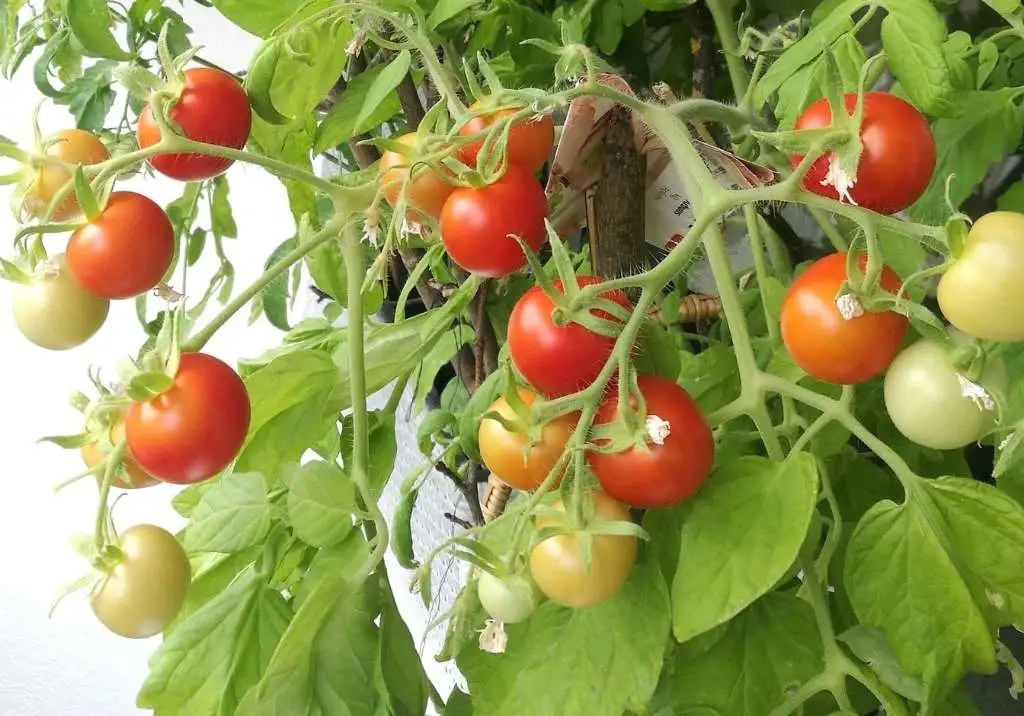Tomatoes are the crown jewels of any garden. Whether you’re growing them for salads, sauces, or snacks, mastering the art of tomato cultivation can transform your garden into a bountiful paradise. Let’s dive into the ultimate guide for growing tomatoes like a pro.
1. Choosing the Right Tomato Variety
Not all tomatoes are created equal. The first step is picking the variety that suits your garden and culinary needs.
Types of Tomatoes:
- Cherry Tomatoes: Sweet and perfect for snacking or salads (e.g., Sweet 100s, Sun Gold).
- Beefsteak Tomatoes: Large and juicy, ideal for sandwiches and slicing (e.g., Big Boy, Brandywine).
- Roma (Plum) Tomatoes: Firm and meaty, great for sauces (e.g., San Marzano, Roma VF).
- Heirloom Tomatoes: Unique flavors and colors, beloved by foodies (e.g., Cherokee Purple, Black Krim).
Pro Tip:
Choose indeterminate varieties for continuous harvests throughout the season and determinate ones for a compact, one-time yield.
2. Start with Healthy Seeds or Seedlings
If you’re starting from seeds, begin indoors about 6-8 weeks before your area’s last frost date. Use seed-starting trays and a light, airy growing medium. For seedlings, pick those with sturdy stems and bright green leaves.
Steps to Start Seeds:
- Plant seeds 1/4 inch deep in seed-starting mix.
- Keep the soil moist but not soggy.
- Provide 12-16 hours of light daily with a grow light or sunny window.
- Transplant to larger pots once they develop their first true leaves.
3. Pick the Perfect Location
Tomatoes thrive in full sun, needing 6-8 hours of direct sunlight daily. Ensure they’re in a spot with good air circulation to prevent diseases.
Soil Requirements:
- Well-draining soil with a pH between 6.0 and 6.8.
- Enrich with organic compost or well-rotted manure for a nutrient boost.
Pro Tip:
Perform a soil test to check nutrient levels and adjust with amendments as needed.
4. Planting Tomatoes: The Right Way
When transplanting tomatoes into the garden or pots, follow these guidelines:
Deep Planting:
Bury 2/3 of the plant, including part of the stem. Tomatoes develop roots along buried stems, creating a robust root system.
Spacing:
- Indeterminate varieties: Space 18-24 inches apart.
- Determinate varieties: Space 12-18 inches apart.
Pro Tip:
Mix a handful of bone meal or crushed eggshells into the planting hole for calcium to prevent blossom-end rot.
5. Support for Strong Plants
Tomatoes grow fast and need support to keep fruit off the ground and prevent breakage.
Popular Support Options:
- Tomato Cages: Ideal for smaller plants.
- Stakes: Tie the main stem loosely to the stake with soft ties.
- Trellises: Perfect for indeterminate varieties.
Pro Tip:
Set up support structures at planting time to avoid disturbing roots later.
6. Watering Wisely
Tomatoes are thirsty plants but dislike soggy soil.
How to Water:
- Water deeply 1-2 times per week, ensuring moisture reaches the roots.
- Avoid overhead watering to prevent leaf diseases.
Pro Tip:
Use drip irrigation or a soaker hose to deliver consistent moisture directly to the soil.
7. Fertilizing for Success
Tomatoes are heavy feeders, especially when flowering and fruiting.
Fertilizer Schedule:
- Before planting: Enrich the soil with compost or a balanced organic fertilizer (e.g., 10-10-10).
- After planting: Use a high-phosphorus fertilizer to promote strong roots and blossoms.
- Mid-season: Apply a balanced or slightly potassium-rich fertilizer for fruit production.
Pro Tip:
Avoid over-fertilizing with nitrogen—this leads to lush foliage but fewer fruits.
8. Pruning and Maintenance
Pruning encourages better airflow and directs energy toward fruit production.
Steps to Prune:
- Remove suckers (small shoots growing in the leaf axils) on indeterminate varieties.
- Trim yellow or diseased leaves regularly.
- Pinch off the growing tips a few weeks before the first frost to focus the plant’s energy on ripening existing fruits.
9. Watch for Pests and Diseases
Tomatoes are magnets for pests like aphids, tomato hornworms, and whiteflies, as well as diseases like blight and wilt.
Pest Solutions:
- Inspect leaves regularly for pests and remove them by hand or with insecticidal soap.
- Plant companion plants like marigolds and basil to repel pests.
Disease Prevention:
- Water at the base of the plant to avoid wet leaves.
- Rotate crops each season to prevent soil-borne diseases.
- Mulch around plants to suppress weeds and prevent soil splash.
10. Harvest Like a Pro
Tomatoes are ready to harvest when they’re firm, vibrant in color, and slightly aromatic.
Tips:
- Pick them at the breaker stage (when they start turning from green to red) to ripen indoors safely.
- Avoid refrigerating ripe tomatoes; it dulls their flavor.
Bonus Tips for Pro-Level Tomato Growing
- Mulch Wisely: Use straw, wood chips, or black plastic mulch to retain moisture, regulate soil temperature, and reduce weeds.
- Epsom Salt Boost: Add a tablespoon of Epsom salt (magnesium sulfate) around each plant during flowering to enhance fruit development.
- Rotate Crops: Avoid planting tomatoes in the same spot year after year to reduce pest and disease buildup.
Growing tomatoes like a pro requires a mix of science, art, and patience. By following these steps, you’ll not only achieve a garden full of thriving tomato plants but also enjoy the satisfaction of biting into juicy, homegrown fruits that are bursting with flavor.
Have any secret tips or tomato tales to share? Let us know in the comments below—happy gardening!




Pingback: The Easiest Vegetables to Grow for Beginners – Karenknows